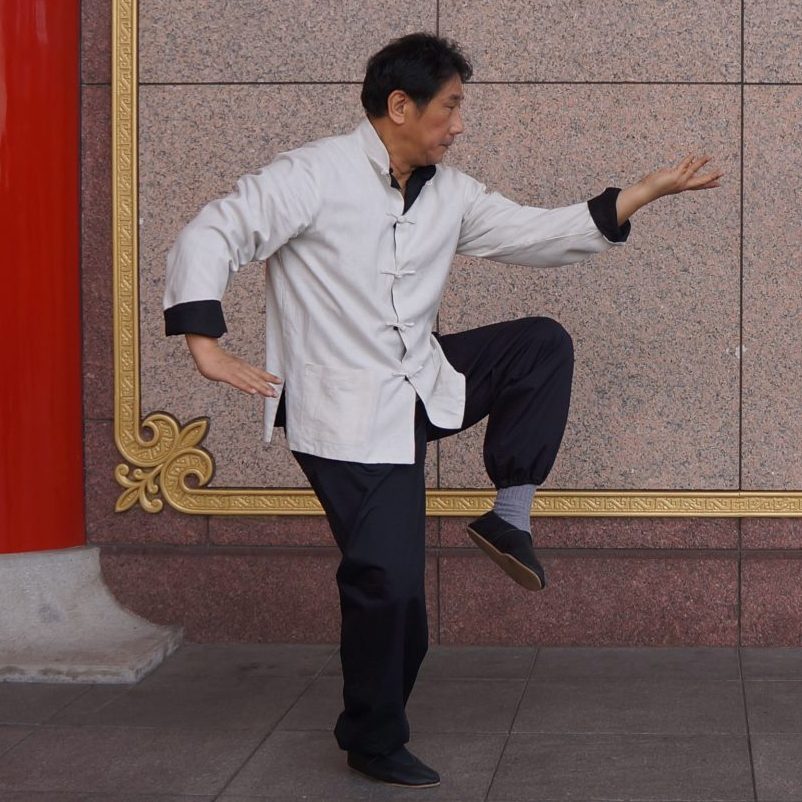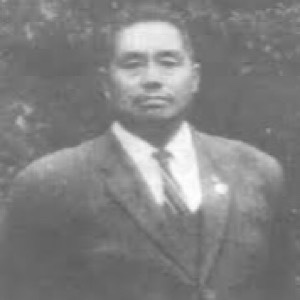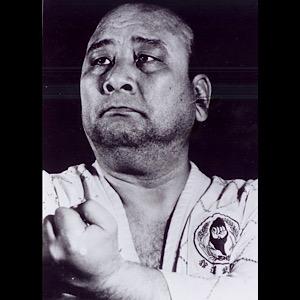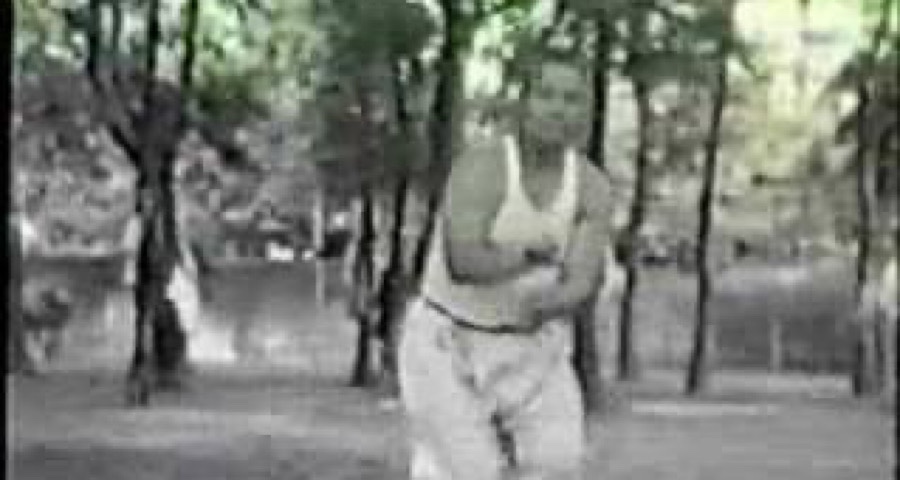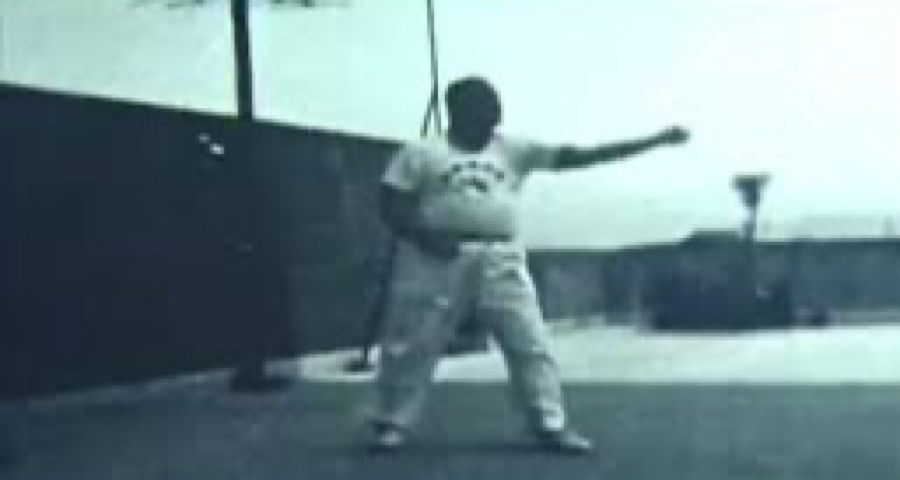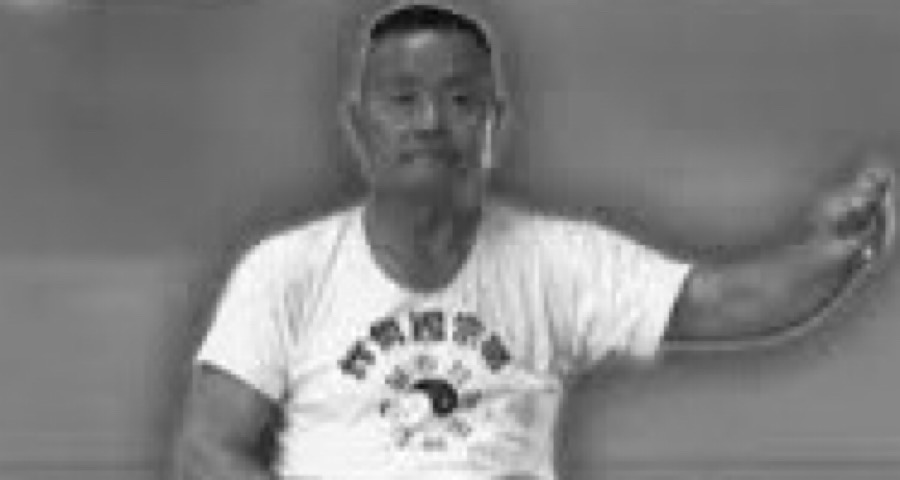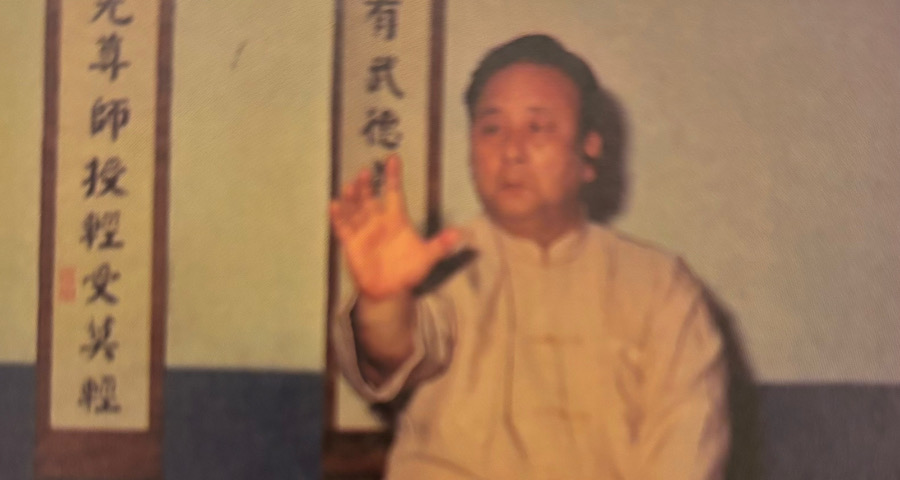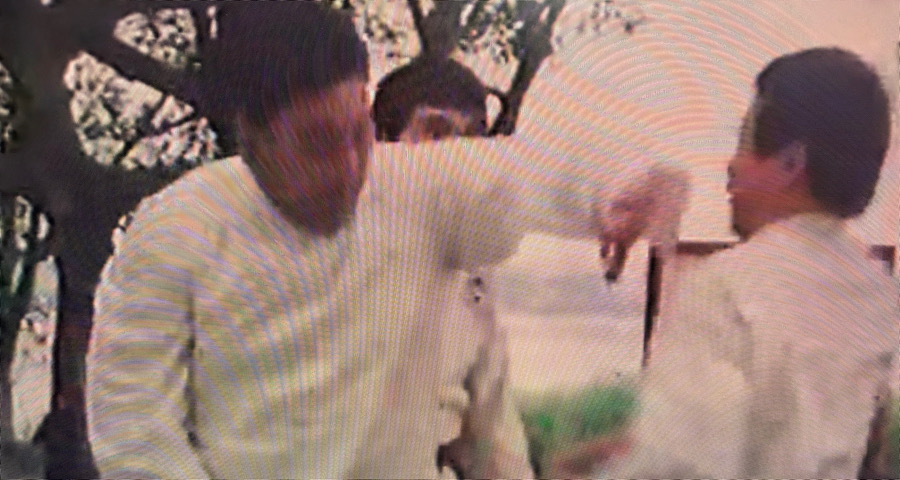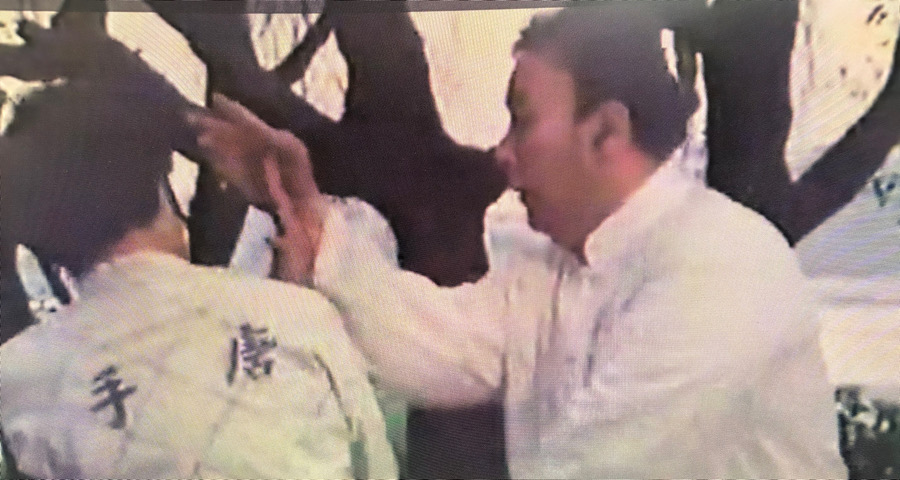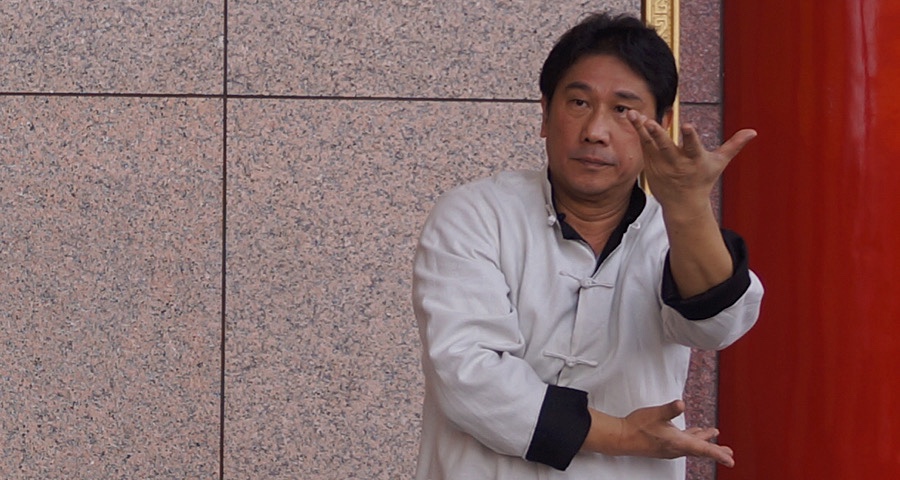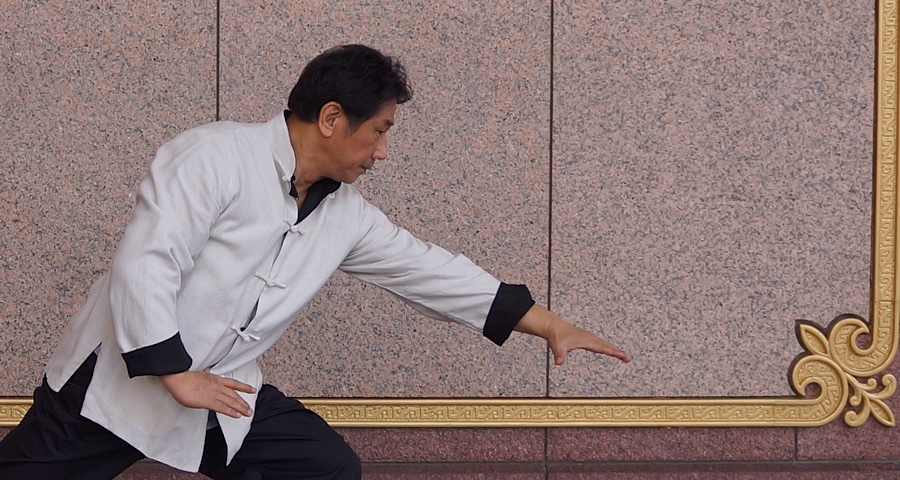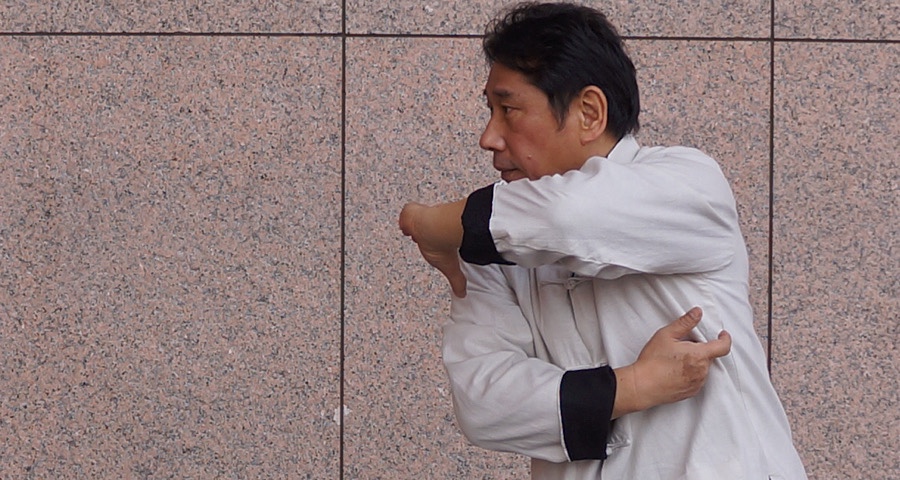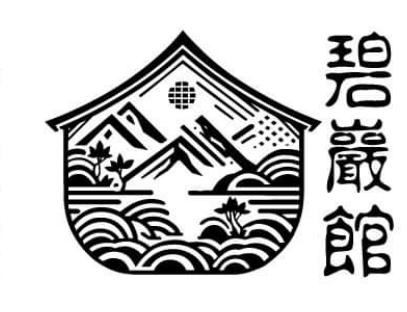Yizong Bagua School
Yì (易) is Yin and Yang, change, and the continuous cycle of life.
Yìzōng is a martial arts school that integrates the study of three traditional martial arts: Xingyiquan (形意拳), Baguazhang (八卦掌), and Taijiquan (太極拳).
Master Zhang Junfeng (張峻峰) came to Taiwan in 1948, where he engaged in both business and martial arts teaching. Later, he dedicated himself entirely to martial arts instruction and founded the Yìzōng National Martial Arts Academy (易宗國術館) in Taiwan.Master Hong Yixiang (洪懿祥), after learning from Master Zhang, founded Yìzōng Tangshoudao (易宗唐手道). Grandmaster Luo Dexiu (羅德修), having studied under Master Hong, incorporated his many years of experience and insight to establish Yìzōng Baguamen (易宗八卦門). It is a martial art born in Taiwan, belonging to Taiwan, and an independent and complete martial arts school.
Yì (易) is Yin and Yang, change, and the continuous cycle of life.
Yìzōng is a martial arts school that integrates the study of three traditional martial arts: Xingyiquan (形意拳), Baguazhang (八卦掌), and Taijiquan (太極拳).
Master Zhang Junfeng (張峻峰) came to Taiwan in 1948, where he engaged in both business and martial arts teaching. Later, he dedicated himself entirely to martial arts instruction and founded the Yìzōng National Martial Arts Academy (易宗國術館) in Taiwan.Master Hong Yixiang (洪懿祥), after learning from Master Zhang, founded Yìzōng Tangshoudao (易宗唐手道). Grandmaster Luo Dexiu (羅德修), having studied under Master Hong, incorporated his many years of experience and insight to establish Yìzōng Baguamen (易宗八卦門). It is a martial art born in Taiwan, belonging to Taiwan, and an independent and complete martial arts school.
Tradition
張峻峰師祖
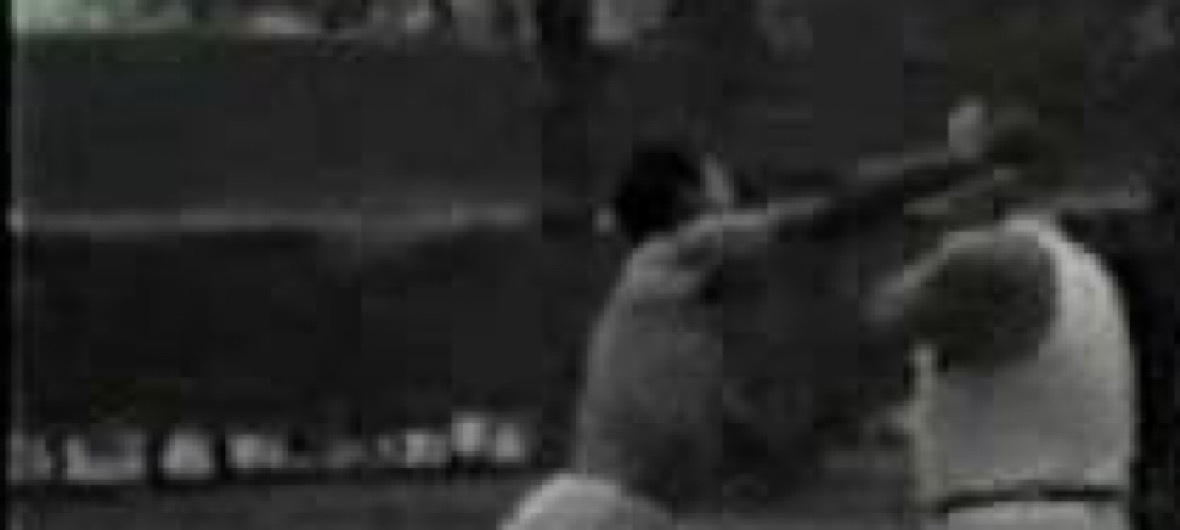
Master Zhang Junfeng (張峻峰) founded the Yìzōng National Martial Arts Academy (易宗國術館) in Taiwan after fleeing the changing political situation in mainland China in 1948. Prior to moving to Taiwan, he operated a business in Tianjin, where he handled the wholesale trade of foreign goods and fresh fruits under the brand "Han Gong Qiu" (漢宮秋). After relocating to Taiwan, he switched to dealing in rice, grains, and flour. In his spare time, he practiced martial arts by the Keelung River, near the former site of the Children's Amusement Park at the foot of Yuanshan. As more people asked him for martial arts guidance, he decided to focus on teaching martial arts as a profession. Despite the challenges of running a business in Taiwan, martial arts was his true passion, and he made it his livelihood.
Master Zhang's Xingyiquan (形意拳) was taught under the Hebei school lineage, passing down from Li Cunyi (李存義). His Baguazhang (八卦掌) was rooted in the Guanghua school and the Gao Yisheng (高義盛) lineage, while his Taijiquan (太極拳) followed the Hao family style (郝派). The Yìzōng system combines all three schools, and at the time in Taiwan, no one was teaching this synthesis, which is why it was referred to as "Taiwan’s Yìzōng" (台始易宗). In 1950 (the 39th year of the Republic), he founded the "Yìzōng National Martial Arts Academy" and began teaching Baguazhang, Xingyiquan, and Taijiquan.
During his time in Tianjin, Master Zhang was close friends with Wu Mengxia (吳孟俠), whom he referred to as a brother. Wu Mengxia introduced him to Gao Yisheng, where Master Zhang trained in both the pre-heaven and post-heaven Baguazhang techniques. He also received valuable practical martial arts training under his senior, Wu Mengxia. Wu had studied under numerous Baguazhang masters, and eventually, he spent many years learning the "Reverse Eight Trigrams" techniques at the hands of Han Muxia (韓慕俠) at Guanghua Mountain, mastering more than fifty Baguazhang techniques. Wu's methods were exceptionally refined, and his understanding of martial theory was profound. Later, Master Gao visited Tianjin, and Master Zhang studied under him, completing his training in the 64-posture Baguazhang system, which deepened his knowledge of the Guanghua lineage.
Master Zhang's Xingyiquan (形意拳) was taught under the Hebei school lineage, passing down from Li Cunyi (李存義). His Baguazhang (八卦掌) was rooted in the Guanghua school and the Gao Yisheng (高義盛) lineage, while his Taijiquan (太極拳) followed the Hao family style (郝派). The Yìzōng system combines all three schools, and at the time in Taiwan, no one was teaching this synthesis, which is why it was referred to as "Taiwan’s Yìzōng" (台始易宗). In 1950 (the 39th year of the Republic), he founded the "Yìzōng National Martial Arts Academy" and began teaching Baguazhang, Xingyiquan, and Taijiquan.
During his time in Tianjin, Master Zhang was close friends with Wu Mengxia (吳孟俠), whom he referred to as a brother. Wu Mengxia introduced him to Gao Yisheng, where Master Zhang trained in both the pre-heaven and post-heaven Baguazhang techniques. He also received valuable practical martial arts training under his senior, Wu Mengxia. Wu had studied under numerous Baguazhang masters, and eventually, he spent many years learning the "Reverse Eight Trigrams" techniques at the hands of Han Muxia (韓慕俠) at Guanghua Mountain, mastering more than fifty Baguazhang techniques. Wu's methods were exceptionally refined, and his understanding of martial theory was profound. Later, Master Gao visited Tianjin, and Master Zhang studied under him, completing his training in the 64-posture Baguazhang system, which deepened his knowledge of the Guanghua lineage.
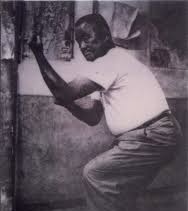
洪懿祥師爺
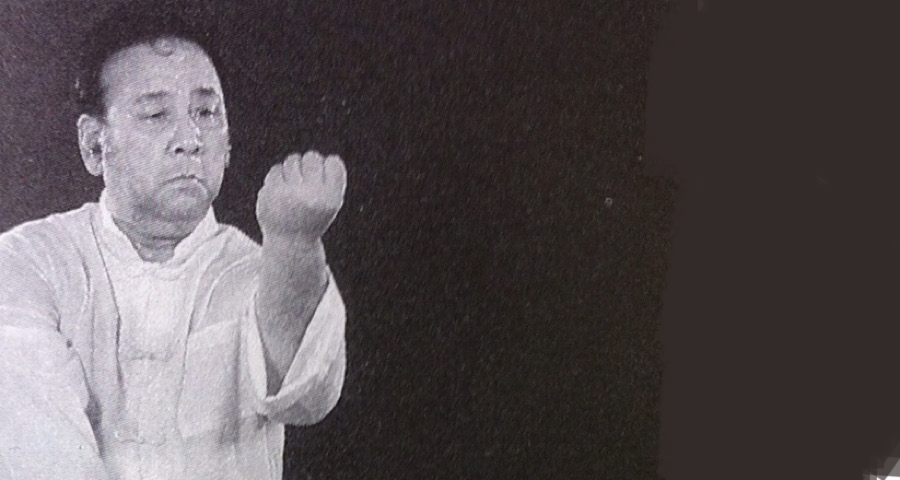
Master Hong Yixiang (洪懿祥), a native of Taipei City (1926-1993), came from a well-respected family residing in Dihua Street, Taipei, known for their incense and candle business. During the Japanese colonial era, electricity was not widely available, and air raids were frequent, so the family’s business thrived as people relied on candles for light while hiding in air raid shelters.
After Taiwan’s recovery in 1945 (the 34th year of the Republic), and until 1947 (the 36th year of the Republic), the Hong family invited several Southern Chinese martial arts masters to teach Shaolin Kung Fu, Crane Fist, Taizu Fist, and grappling techniques. Along with these martial arts, they also learned massage and bone-setting skills.
In 1948 (the 37th year of the Republic), Master Zhang Junfeng often practiced martial arts at the foot of Yuanshan in Taipei. His martial presence, marked by dynamic postures and peculiar movements such as spinning and practicing Xingyiquan, impressed the local people. Some locals sought his guidance, and he quickly gained their admiration. During this time, Master Hong and several martial arts friends also practiced at Yuanshan. After Taiwan's recovery, with the instability of the social situation, despite the Hong family’s years of Southern martial arts training, they felt unprepared to defend their homeland and decided to gather like-minded individuals. They invited Master Zhang to teach martial arts in the Dihua Street area.
In 1964 (the 53rd year of the Republic), Master Hong began teaching martial arts. He had previously interacted with Japanese martial arts organizations and observed their well-organized and structured development. This sparked his realization that traditional martial arts teaching methods needed to be reformed. In 1966 (the 55th year of the Republic), he founded the Tang Shou Dao Committee, aiming to systematically promote Chinese martial arts.
The curriculum of Tang Shou Dao was developed with several sets of routines based on Shaolin, Xingyi, and Baguazhang techniques as the foundation for students at the beginner and intermediate levels. Xingyiquan and Baguazhang were only taught in the advanced courses. The goal was to start with the external methods of Shaolin to strengthen muscles and bones, then progress to the internal arts such as Xingyiquan, Baguazhang, and Taijiquan, thus integrating both internal and external martial arts to form a comprehensive Chinese martial art. The training system included uniform attire, divided into different levels and stages to motivate students. They emphasized practical combat applications and incorporated protective gear for sparring.
After Taiwan’s recovery in 1945 (the 34th year of the Republic), and until 1947 (the 36th year of the Republic), the Hong family invited several Southern Chinese martial arts masters to teach Shaolin Kung Fu, Crane Fist, Taizu Fist, and grappling techniques. Along with these martial arts, they also learned massage and bone-setting skills.
In 1948 (the 37th year of the Republic), Master Zhang Junfeng often practiced martial arts at the foot of Yuanshan in Taipei. His martial presence, marked by dynamic postures and peculiar movements such as spinning and practicing Xingyiquan, impressed the local people. Some locals sought his guidance, and he quickly gained their admiration. During this time, Master Hong and several martial arts friends also practiced at Yuanshan. After Taiwan's recovery, with the instability of the social situation, despite the Hong family’s years of Southern martial arts training, they felt unprepared to defend their homeland and decided to gather like-minded individuals. They invited Master Zhang to teach martial arts in the Dihua Street area.
In 1964 (the 53rd year of the Republic), Master Hong began teaching martial arts. He had previously interacted with Japanese martial arts organizations and observed their well-organized and structured development. This sparked his realization that traditional martial arts teaching methods needed to be reformed. In 1966 (the 55th year of the Republic), he founded the Tang Shou Dao Committee, aiming to systematically promote Chinese martial arts.
The curriculum of Tang Shou Dao was developed with several sets of routines based on Shaolin, Xingyi, and Baguazhang techniques as the foundation for students at the beginner and intermediate levels. Xingyiquan and Baguazhang were only taught in the advanced courses. The goal was to start with the external methods of Shaolin to strengthen muscles and bones, then progress to the internal arts such as Xingyiquan, Baguazhang, and Taijiquan, thus integrating both internal and external martial arts to form a comprehensive Chinese martial art. The training system included uniform attire, divided into different levels and stages to motivate students. They emphasized practical combat applications and incorporated protective gear for sparring.
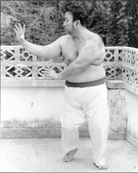
羅德修大老師
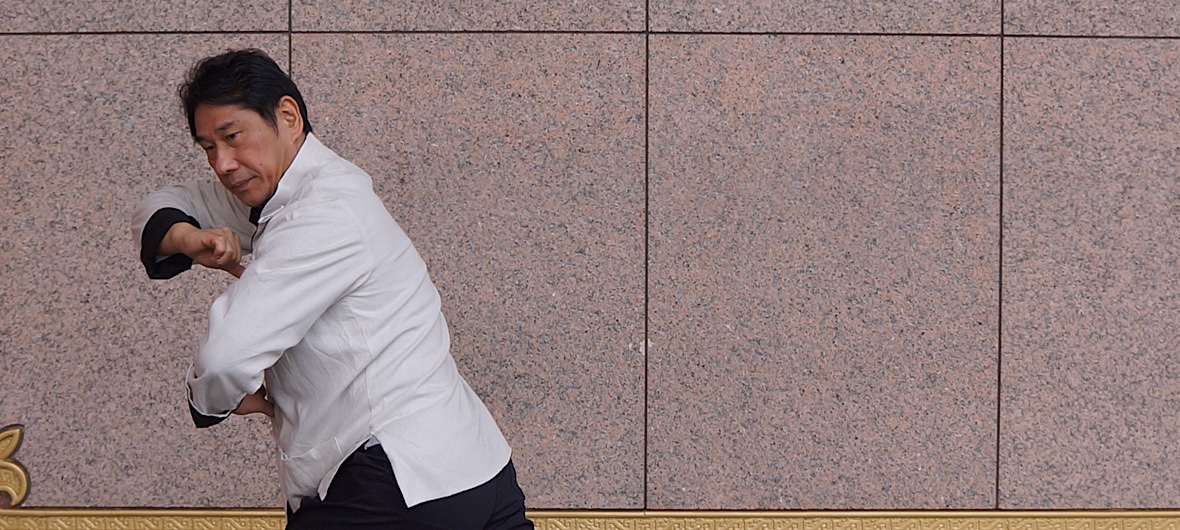
Master Luo Dexiu, born in 1956 in Taipei City, is a naturally gifted martial artist, with many exciting and interesting stories to tell. He has unique insights into both martial arts techniques and teaching methods, and he is dedicated to mentoring his students without reservation.
During his elementary school years, he was deeply impressed by martial arts performances at temple fairs. In 1968, he began learning at the Tang Shou Dao school founded by Master Hong Yixiang. Tang Shou Dao is a martial art that blends Shaolin Fist, internal martial arts, and Sanshou (Chinese kickboxing). Between 1972 and 1974, he participated in regional and national tournaments (in Sanshou), earning several victories.
Through his practice of Xingyiquan, he gained a profound understanding of internal martial arts. After 1975, he began to focus on in-depth study of Baguazhang within his own system. During this period, he visited many of Master Hong Yixiang's disciples to gain a comprehensive understanding of the school's martial arts system. From 1977 to 1979, while serving in the military in southern Taiwan, he met Liu, a student of Sun Xikun, and received teachings from him. This experience deepened his understanding of the Cheng family Baguazhang system. After returning to Taipei, he continued to visit the south whenever possible to seek further guidance.
After many years of study, he realized that although the martial arts of the Yizong system were exquisite, the system itself lacked sufficient structure. He then set about organizing it more systematically to make it more complete. Believing that great things should be passed on, he began teaching Yizong Baguazhang in 1990. To date, his students have spread across Europe, the United States, and the Middle East, with many of them continuing his spirit and expanding the system in various regions.
During his elementary school years, he was deeply impressed by martial arts performances at temple fairs. In 1968, he began learning at the Tang Shou Dao school founded by Master Hong Yixiang. Tang Shou Dao is a martial art that blends Shaolin Fist, internal martial arts, and Sanshou (Chinese kickboxing). Between 1972 and 1974, he participated in regional and national tournaments (in Sanshou), earning several victories.
Through his practice of Xingyiquan, he gained a profound understanding of internal martial arts. After 1975, he began to focus on in-depth study of Baguazhang within his own system. During this period, he visited many of Master Hong Yixiang's disciples to gain a comprehensive understanding of the school's martial arts system. From 1977 to 1979, while serving in the military in southern Taiwan, he met Liu, a student of Sun Xikun, and received teachings from him. This experience deepened his understanding of the Cheng family Baguazhang system. After returning to Taipei, he continued to visit the south whenever possible to seek further guidance.
After many years of study, he realized that although the martial arts of the Yizong system were exquisite, the system itself lacked sufficient structure. He then set about organizing it more systematically to make it more complete. Believing that great things should be passed on, he began teaching Yizong Baguazhang in 1990. To date, his students have spread across Europe, the United States, and the Middle East, with many of them continuing his spirit and expanding the system in various regions.
